Philodendron bipennifolium (Violin, Fiddle Leaf, or Horsehead Philodendron) is a lovely rare climbing houseplant with multi-lobed, horse’s head-shaped glossy green leaves. But there are other variations like P. bipennifolium aurea (gold), variegated, Splash Gordon, Glaucous blue, Silver, etc., whose coloration differs.
Learn more about identifying this tropical evergreen plant (growing habits, leaves, stems, and flowers) and how it differs from other P. pedatum and P. Florida. There is also a part on plants related to it like Philodendron joepii, Golden Dragon, and Jerry Horne.
That is not all. We will also give you P. bipennifolium care needs (light, temperature, humidity, watering, pruning, feeding, and so on) and propagation. And you will learn more about some issues you may face like pests, disease, leaf discoloration (yellowing, browning, etc.), curling, or your plant drooping.
Lastly, if it interests you, the discussion will guide you on where to buy P. bipennifolium and its prices. These places include Etsy.com and eBay, with sellers not just in the US but also in Canada, the UK, Australia, the Philippines, etc. Also, some of these sellers ship worldwide.
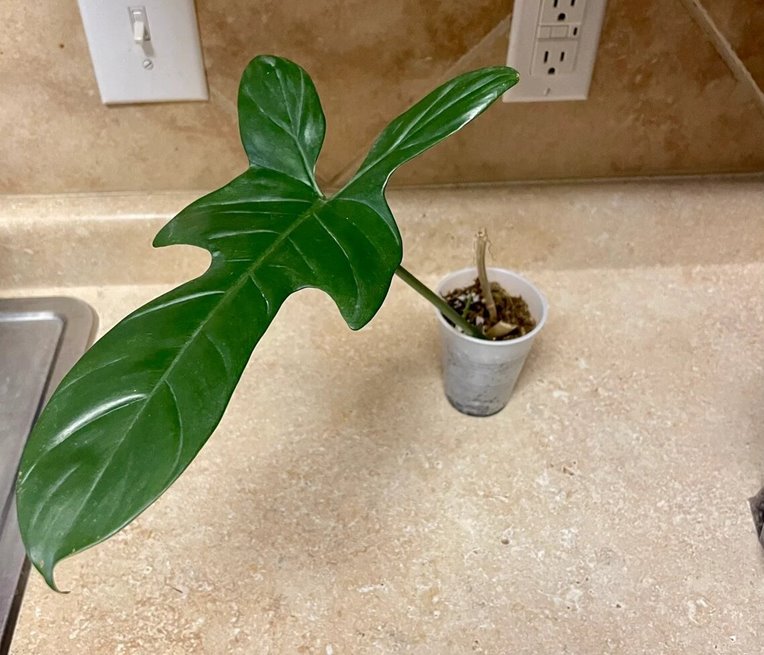
Contents
- Quick overview
- History and origin
- Description and identification
- 1. Growing habits
- 2. Size and growth rate
- 3. Leaves
- 4. Stems
- 5. Flower
- Philodendron bipennifolium forms or types
- 1. Philodendron bipennifolium aurea - Gold Violin Philodendron
- Philodendron bipennifolium variegata
- 3. Philodendron ‘Splash Gordon’
- 4. Philodendron bipennifolium silver
- 5. Philodendron bipennifolium glaucous blue form
- Plants related to Philodendron bipennifolium
- 1. Philodendron ‘Golden Dragon’
- 2. Philodendron 'joepii'
- 3. Philodendron Jerry Horne (Philodendron Ecuador)
- Philodendron bipennifolium vs. Florida
- Philodendron pedatum vs. bipennifolium
- Philodendron bipennifolium care
- Philodendron bipennifolium propagation
- 1. Horsehead Philodendron water propagation
- 2. Fiddleleaf Philodendron Soil propagation
- 3. Air layering
- Horsehead Philodendron problems
- 1. Pests and disease
- 2. Root rot
- 3. P. bipennifolium leaves yellowing or turning brown
- 4. Leaves curling and your plant drooping
- Where to buy Philodendron bipennifolium
- Frequently asked questions (FAQs)
Quick overview
- Scientific name: Philodendron bipennifolium (pronounced as fill-loe-DEN-drun bi-pen-niff-FOLE-lee-um) Schott
- Family: Araceae
- Common names: Fiddle Leaf Philodendron, Horsehead Philodendron, Violin Philodendron or Philodendron Panda
- Native habitat: Venezuela, Suriname, and Brazil (North, Northeastern to Southeastern)
- Toxicity: All Horsehead Philodendron parts are poisonous or toxic to dogs, cats, and humans. Why? Because their sap has insoluble calcium oxalate. When chewed, patients will suffer from severe oral burning sensation and irritation. Their lips, tongue, or mouth will turn red and swell. Other signs are drooling, difficulty in swallowing, and loss of appetite.
- Care level: Easy or low maintenance
- Growth rate: Moderate
History and origin
Philodendron bipennifolium was described by Heinrich Wilhelm Schott in 1855, and it is not the same as Philodendron panduriforme, which some people claim is just an old name. These two have easy-to-notice differences. The confusion is because bipennifolium has highly variable forms.
Did you know that the P. bipennifolium plants in the ornamental trade are baby to subadult plants, and you will hardly find a mature form?. Now you know.
Lastly, this plant has various common names like Horsehead Philodendron, Fiddleleaf Philodendron, and Violin Philodendron, which come from the appearance of the leaves, i.e., immature and mature. We will use them synonymously.
Description and identification
Let us start with appearance and growing habits to avoid confusion or doubt.
1. Growing habits
Philodendron bipennifolium is a tropical climbing hemiepiphyte. A hemiepiphyte is a plant with both terrestrial and epiphytic growth phases.
This aroid is native to Venezuela and Brazil (North, North East, and South East). But some sources (1) also include French Guiana, Colombia, Ecuador, and Peru.
Like most other Philodendron species, it morphs from juvenile to adulthood, meaning a mature plant will look different from a baby or juvenile plant. Therefore, you may find different-looking leaves on the same plant.
Lastly, if you want to see the mature plants with adult leaves, give them a place to climb. Also, note that they take a long time to mature.
2. Size and growth rate
It has a moderate growth rate, notes the University of Florida IFAS Extension, and in its natural habitat, it can grow beyond a height of 10 feet. But at home, it will be about 6 to 8 feet high and requires a moss pole or support to reach these heights.
3. Leaves
Since it undergoes morphogenesis, expect baby, juvenile, subadult and adult plants to have varying leaves. So, the lower, middle, and upper leaves may look different on your plant and may have three to five lobes.
Lower or juvenile plants will have oval deep green leaves with a weakly heart-shaped base, i.e., slightly rounded upper lobes. These leaves look somewhat like a violin or fiddle.
On the other hand, mature Philodendron bipennifolium will have a horse’s head shaped, thinly leathery, shiny green leaves with slightly ragged edges. These leaves have more sharply pointed posterior upper lobes resembling ears with an open sinus, obtusely triangular middle lobes (bulge), and a pointed (oblong-elliptic or oblong-lance-shaped) lower lobe.
Immature (juvenile and subadult) leaves may be up to about 10 inches long, but they will be much larger in a mature specimen, i.e., 18 inches or longer.
The midrib is relatively thick in mature specimens, while the briefly denuded posterior ribs disappear as you move to the apex. Also, the leaf has about 3-4 lateral veins on the middle rib and 2-3 on the lower.
Lastly, the petiole in the immature leaves has a petiolar sheath half its length, while in mature leaves, it is terete. Also, this leaf stalk is slightly longer to equal the leaf blade in length.
4. Stems
The thin greenish to brownish (older) climbing stems have relatively short internodes and will grow aerial roots at the nodes that aid in climbing.
5. Flower
This plant takes about 12 to 15 years to mature in its natural habitat. So, it is not easy to see a mature form as an indoor houseplant.
Mature P. bipennifolium will produce 2-3 inflorescences per axil. These inflorescences have a cylindrical spadix (bears male and female tiny flowers) and a surrounding a dirty yellowish-white spathe (bract), constricted at the middle (separating the upper blade and lower tube).
Like other Philodendron plants, the spadix has female flowers on the lowermost part (inside the tube), a sterile male section in the middle, and fertile male flowers at the top. And when compared in diameter, the male portion is a bit thicker than the female.
Philodendron bipennifolium forms or types
Many Philodendron bipennifolium forms include Splash Gordon, Variegated, Silver, glaucous blue, etc. Let us look at each of these forms and say a thing or two.
1. Philodendron bipennifolium aurea - Gold Violin Philodendron
Philodendron bipennifolium aurea (Philodendron Hammerhead Gold, Gold Violin Philodendron, or Philodendron yellow violin) is a variation that produces neon-yellowish new leaves whose exaggerated lobes make it look like a violin. However, as the leaves mature, they will gradually turn green like the standard plant.
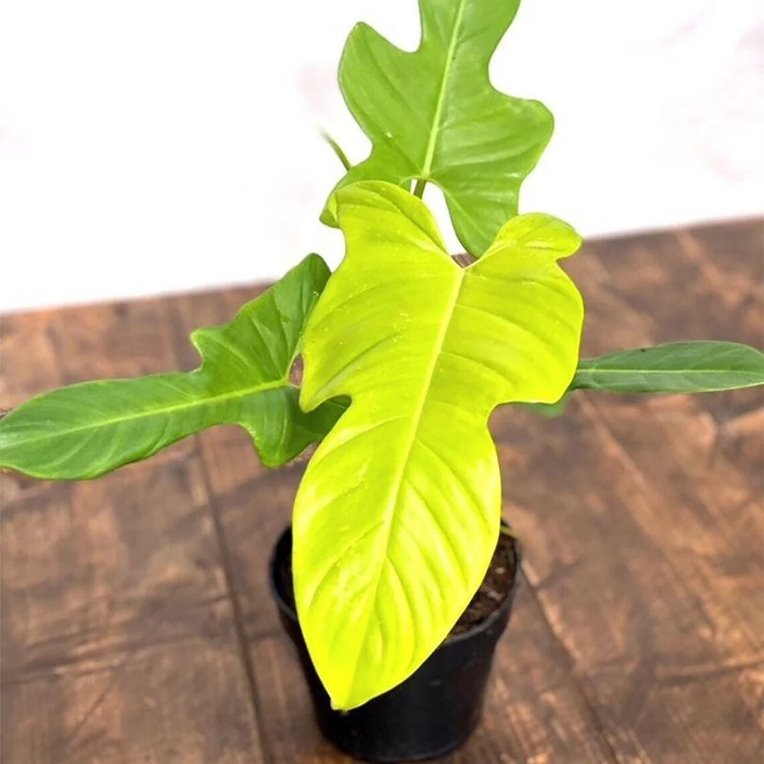
Note that Philodendron bipennifolium ‘Gold Violin’ isn’t a variegated form. So, don’t confuse it with P. bipennifolium aurea variegata. It only has neon yellow-green new leaves that transition to green when they harden.
If this plant interests you, you will be glad to know that Philodendron Golden Violin care is similar to the regular P. bipennifolium form. However, we recommend giving it bright, indirect light if you want those lovely yellow-green newly emerging leaves. Otherwise, they may not look as vibrant.
What about prices? Is it very expensive or not? Again here comes something to put a smile on your face. Its price is comparable to the standard plant, i.e., olden violin Philodendron price ranges from $40 to $100. Cuttings may go for as little as $20, while larger and more established plants cost over $100.
Lastly, the best place to buy this plant is Etsy. But you can also go to Facebook, Instagram, or eBay. Other places and prices are as follows:
- Steve’s Leaves (Lewisville, TX) - $26.99
- NSE Tropical (Plantation, FL) - $79.00
- Groovy Plants Ranch (Marengo, OH) - $ 130.00
- Gulley Greenhouse and Garden Center (Fort Collins, CO) -$39.99
- Urban Sprouts (Renton, WA) - $64.99
- Anything Grows (Alberta, Canada) - $59.00
- The Split Leaf Plant (Toronto, Canada) - $12.00
- Trofolia (Ottawa, Ontario Canada) - $95.0
- Plant Circle (Berlin, German) -€17,76
Philodendron bipennifolium variegata
The second, more fascinating and rare form to consider is the Philodendron bipennifolium variegated (Philodendron Violin variegated or variegata) form. It has dark green leaves with yellowish, mint, light green sectors, marbling, streaks, splotches, or even half-moon markings.
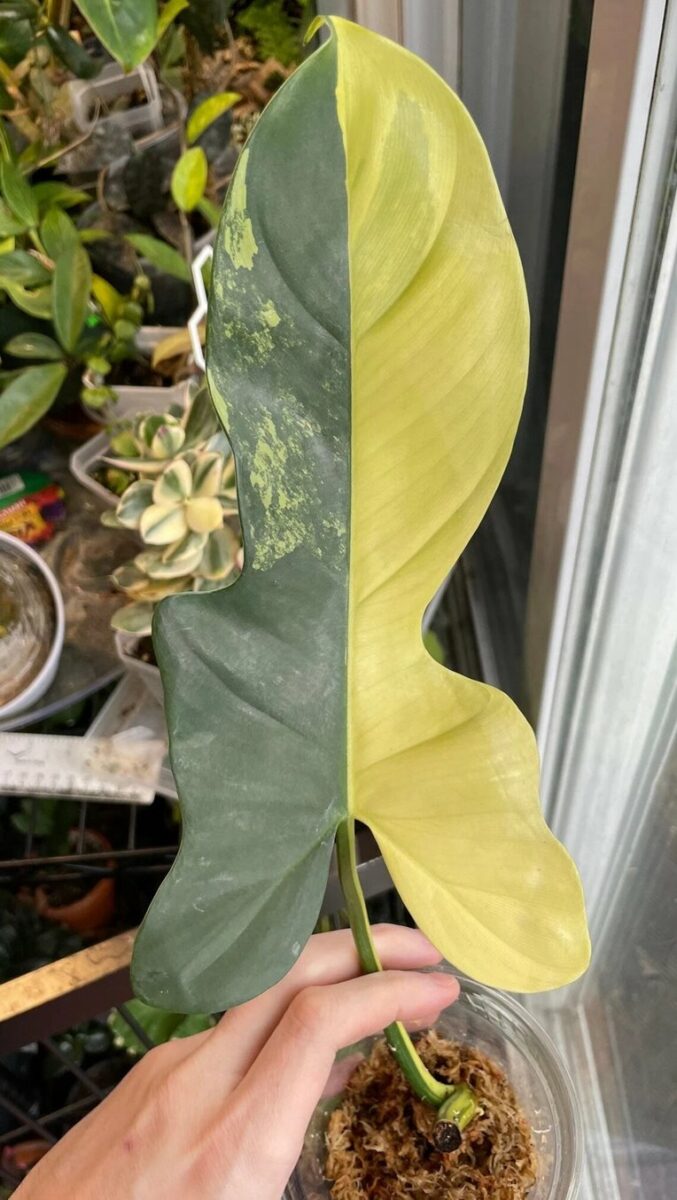
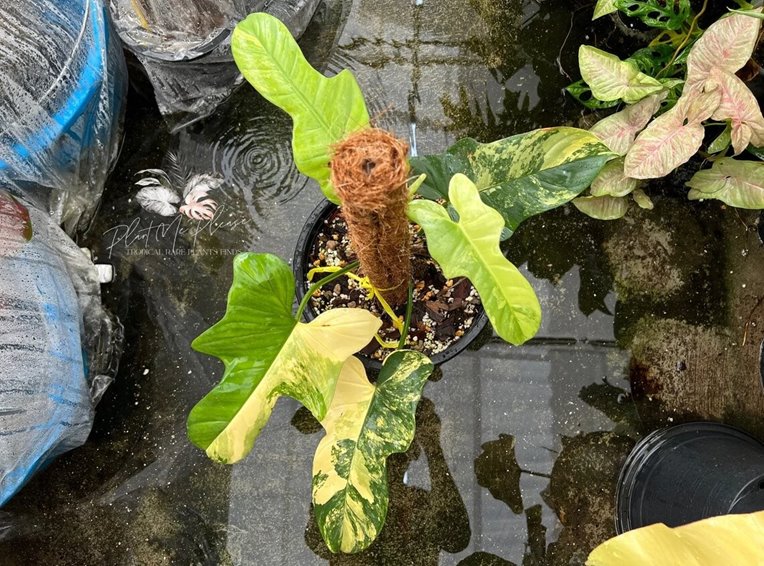
If you wish to buy this plant, we must warn you that it is an expensive plant, i.e., the Philodendron Violin Variegated form price ranges from $250 to $2500. Unrooted and rooted cuttings and smaller plants will cost between $250 and $700, while larger and highly variegated plants will cost $1000 or more.
What about care needs? Are they special? Luckily not. Care needs for these variegated plants are similar to that of standard green plants we will look at afterward. However, you need to ensure they have bright, indirect light for proper coloration and fast growth.
If you are interested in buying a Philodendron violin variegata plant, the best place is Etsy.com. Other equally good places are eBay, Facebook, and Instagram. Also, you can buy it from a handful of sites, including:
- Rare Plant Fairy (Detroit, MI, USA) - $1,250.00
- The Rare Leaf (Australia) - $3,650.00
- Indo Tropical Plants (Sanur Bali, Indonesia) - $500
- Plant Buys (East Java, Indonesia) - $499
Lastly, if you decide to buy this plant from outside the USA, don’t forget to get a phytosanitary certificate. Luckily, most vendors offer it free, considering this plant’s high price.
3. Philodendron ‘Splash Gordon’
Philodendron bipennifolium ‘Splash Gordon’ is a cultivar or variation of P. bipennifolium with silvery green or cream mottled or splashed green new leaves. But as the leaves harden and mature, they become dark green. So, this is not a variegated plant.
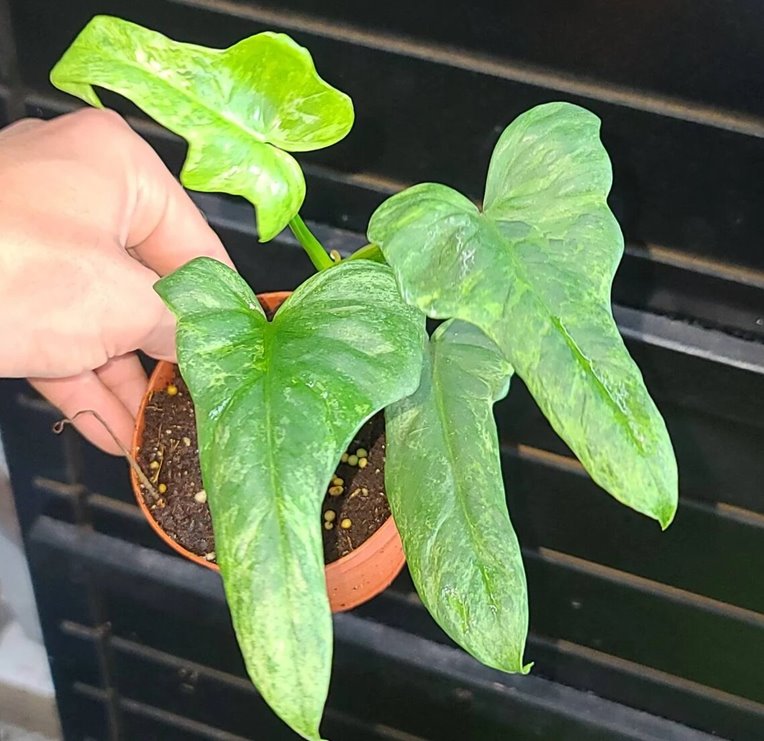
Philodendron Splash Gordon’s price ranges from $45 to $250 depending on the size and where you buy it, and you can find it at Etsy.com, eBay, Facebook, Instagram, and Glasshouse Works (Stewart, OH).
Lastly, the Splash Gordon variation doesn’t need any special care except for what we will discuss. But we will encourage you to stick to bright, indirect light.
4. Philodendron bipennifolium silver
P. bipennifolium Silver or Silver Violin is a rare variation whose mute blue-green coloration gives it a silvery sheen appearance.
Not much information is available on this plant, including its prices. Also, we were unable to find any vendor inside of the USA. Only a few vendors in Europe have the plant, with most sold out.
5. Philodendron bipennifolium glaucous blue form
P. bipennifolium glaucous or Blue Fiddleleaf is another variation with a dull grayish green or grayish blue hue, unlike the regular plant with shiny green leaves.
Some people often refer to it as the blue form, and its price ranges from $40 to $90 at Etsy.com. However, some vendors may sell it more expensively.
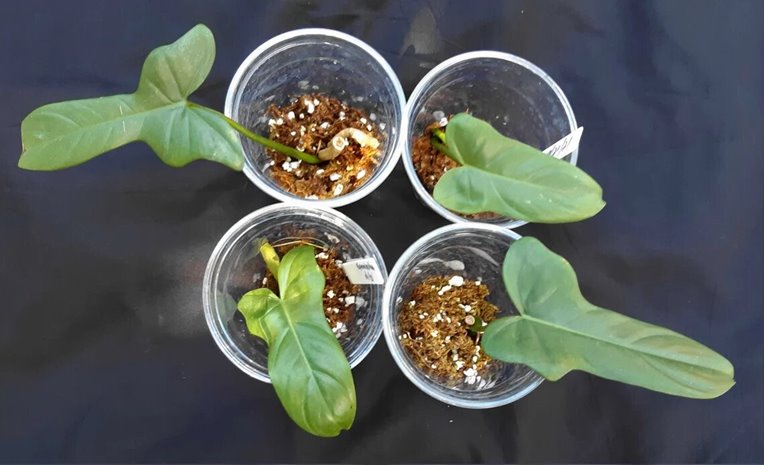
Lastly, the care needs for glaucous form are the same as those we will look at later in the discussion. So, you don’t have to include any other special care.
Besides the above forms, some are related in one way or the other to P. bipennifolium. These plants include:
1. Philodendron ‘Golden Dragon’
Philodendron Golden Dragon (Philodendron Lime Fiddle) is a Philodendron hybrid created in Thailand from supposedly P. bipennifolium, its cultivar or cross. But the creator and exact parentage are uncertain.
Mature plants will have multi-lobed, vaguely dragon’s head-shaped green leaves with golden mottling or speckles, or as some people say, the leaves are more like multi-lobed arrowhead-shaped. However, some may not have the gold speckles
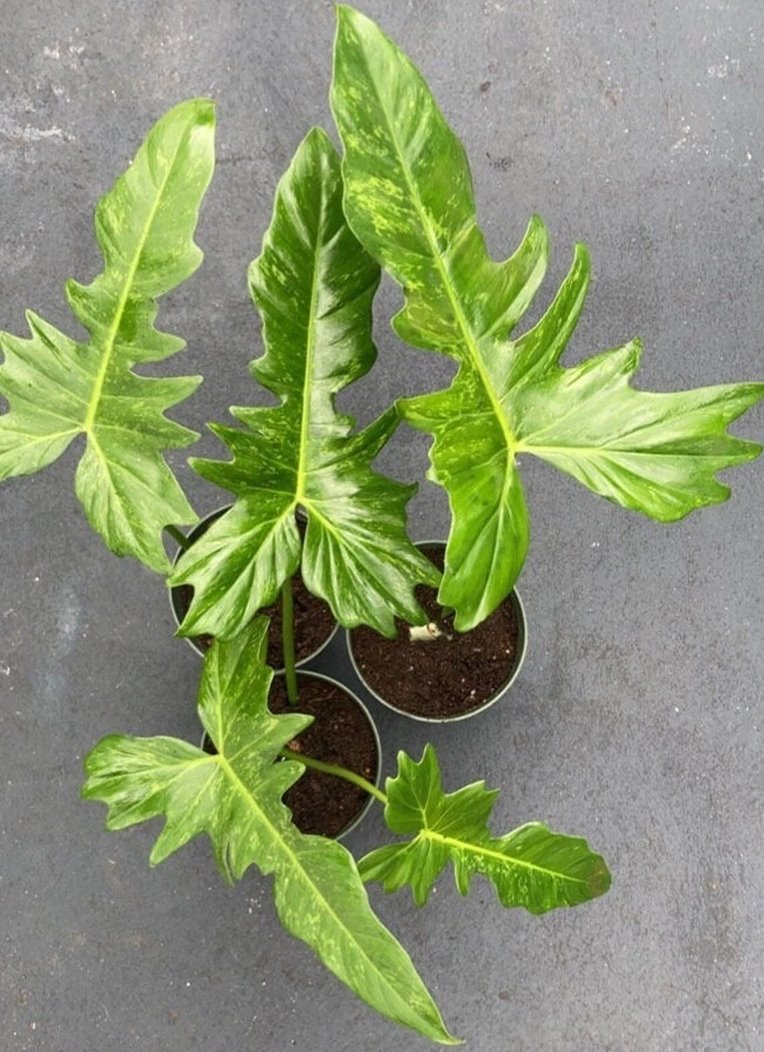
Lastly, besides the green form with gold splashes, some plants are variegated, i.e., they have whitish, cream, mint splotches, sectors, or even half-moon leaves.
2. Philodendron 'joepii'
Philodendron joepii is probably a natural hybrid that Dr. Joep Moonen collected in 1991 at Mataroni River in the Eastern part of French Guiana. He believes it is a hybrid between P. bipennifolium and Philodendron pedatum growing in the same area.
P. joepii plants have three-lobed green leaves. The lower lobe tapers upwards, and its body becomes narrower and has two slender upper lobes. Sometimes, people confuse it with Philodendron 69686, which is also a three-lobed, presumably hybrid too.
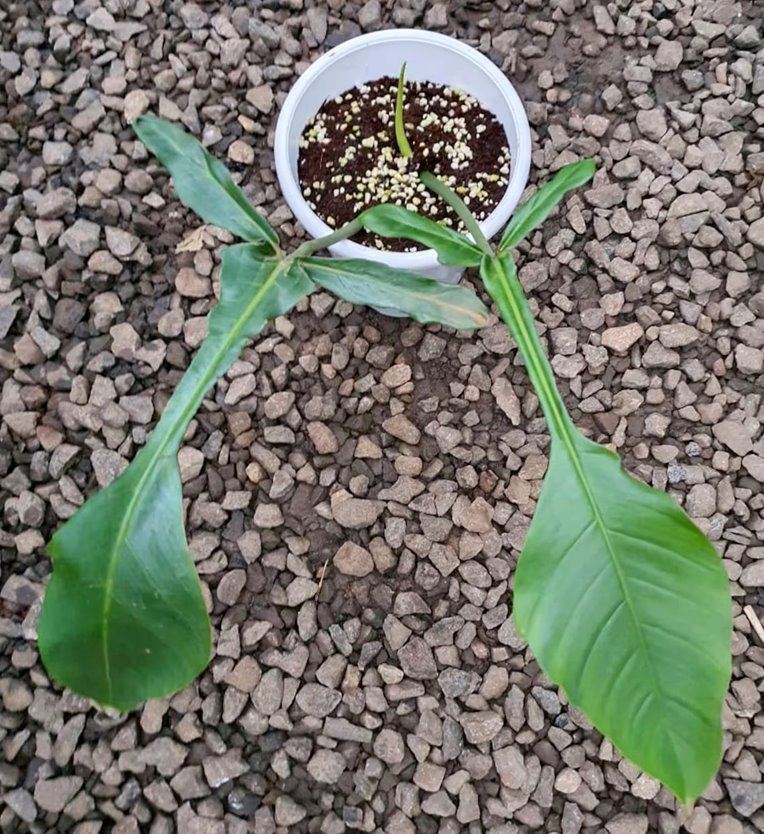
Lastly, for a non-variegated plant, joepii is among the most expensive Philo plants.
3. Philodendron Jerry Horne (Philodendron Ecuador)
Also known as Philodendron Ecuador Canoe, Philodendron Jerry Horne is another natural hybrid of P. bipennifolium native to the Brazilian Rainforest first released by Miami collector and nurseryman Jerry Horne.
Mature plants will have multi-lobed glossy green leaves with long and narrower upper, ear-like, and midsection wing-like shorter lobes. Also, their midrib is somewhat thick, and their edges are slightly scalloped.
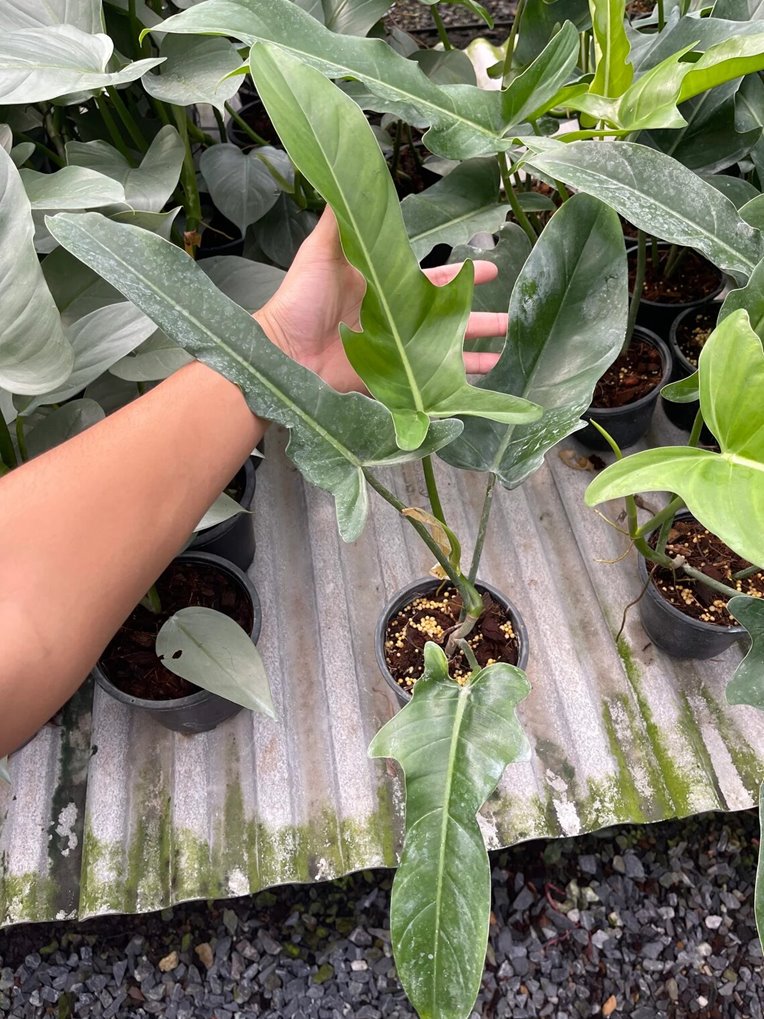
Philodendron bipennifolium vs. Florida
While the true origin isn’t known, many botanists and collectors believe that Philodendron Florida is a Philodendron pedatum x P. squamiferum hybrid created in the 1950s by Robert McColley. It has other cultivars like Philodendron Florida Ghost and Philodendron Florida Beauty
Some people may confuse it with P. bipennifolium since it also has multi-lobed leaves. But it shouldn’t be very hard to tell the differences.
P. Florida has multi-lobed dark green leaves with warty reddish petiole that does not horse head-shaped, i.e., pointed posterior lobes, middle obtusely triangular lobes, and a lower lobe and smooth petioles like bipennifolium.
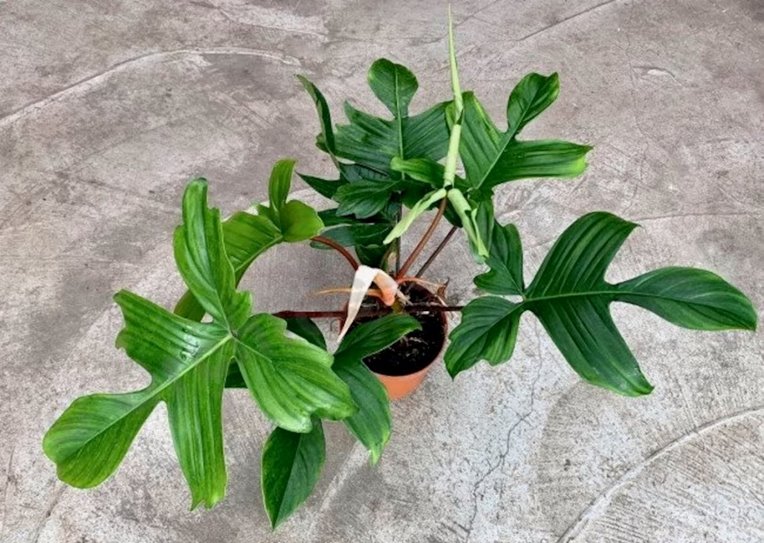
Lastly, Florida beauty is variegated, while Florida Ghost new leaves emerge white, cream, or light green but gradually change to light green or yellow-green hues before turning solid green. So, it is not a variegated plant but behaves like P. bipennifolium aurea.
Philodendron pedatum vs. bipennifolium
Philodendron pedatum is native to South Tropical America and has multi-lobed green leaves and smooth petioles.
Some people have trouble telling these two plants apart. However, it should be hard because, unlike P. bipennifolium, with multi-lobed, horse’s head-shaped leaves, pedatum leaves are deeply multi-lobed to nearly pedatisect (sinuses almost reaching the midrib).

Also, the pedatum lobes are further lobed and will have up to 5 lobes on the posterior end and 1 to 5 lateral lobes on the anterior section.
Philodendron bipennifolium care
Philodendron bipennifolium needs a warm (65-85°F), humid place with bright indirect light. Grow it in well-drained soil and airy soil high in organic matter, and ensure you water it when a few inches of the top soil feel dry.
Here are horsehead Philodendron care needs and requirements:
- USDA hardiness zone: 10-11, not frost hardy.
- Temperature: 65 to 85°F (18-29°C). Avoid cold drafts and temperatures below 50°F. Also, don’t place it near heat sources.
- Humidity: It loves high humidity, 60% or more. But you can still grow in moderate humidity, i.e., the 40s and 50s. If yours is too low, mist your plant, have a pebble tray, or buy a humidifier like AquaOasis™ Cool Mist Humidifier, Amazon's best seller.
- Light: Bright, indirect light but can tolerate moderate. However, for variegated plants, stick to bright indirect light. Also, avoid hot direct sun, and if yours is too little, invest in grow lights. Briignite LED Grow Light Bulb is an excellent buy. They have a long lifespan, up to 50000 hrs and have sunlike, full spectrum light. Also, they are Amazon's best seller.
- Best soil: Fiddle leaf Philodendron requires a well-drained, airy soil mix high in organic matter. Buy an aroid mix (See Etsy.com) or make yours by adding perlite, peat moss, bark chips, and compost to potting soil.
- Watering: Thoroughly water when the top few inches or up to your 1st finger knuckle feel dry, and for those with soil meter moisture, water when the reading is in the dry zone (three or less for XLUX Soil Moisture Meter).
- Fertilizer: Feed your plant at least once a month with a balanced houseplant liquid fertilizer during the growing months. Apply ⅛ of a teaspoon of Bonide Liquid Plant Food 10-10-10 per quart of water and use it to feed your plant twice a month.
- Pruning: With your sterilized gardening shears, cut any dead, damaged, or decayed leaves. Also, in early spring, you can cut back stems a bit to control growth.
- Repotting: Repotting is after 2-3 years or when rootbound. Use a pot 2-3 inches wider in diameter.
- Stake: Buy and stake your plant with a moss pole, totem, trellis, etc.
Philodendron bipennifolium propagation
The best way to propagate Philodendron bipennifolium is by stem cutting in water or soil. But you can also go for air layering. Seeds are rare.
Your stem cutting must have at least a node, the knobby portion where aerial roots grow and leaves attached. Remember, you cannot use nodeless stems, leaves with petiole, or aerial roots.
We will look at stem cutting in water and talk about something small on soil propagation and air layering.
1. Horsehead Philodendron water propagation
You will have a chance to see your plant root, and the process will be less messy. But your plant will suffer more shock when you transplant it and will not get nutrients present in the soil.
a). What you need
- A jar
- Gardening shears or knife
- Rooting hormone like Garden Safe Brand TakeRoot or Clonex.
- 70-90% rubbing alcohol for sterilization
b). Steps to follow
- Select a healthy mature stem with at least a node and cut it just below the lower node about ¼ an inch from the node with your gardening scissor or knife. If it has more than two leaves, remove the lower ones.
- Let it callus for about an hour (optional), then apply your rooting hormone on the cut end, i.e., a node you will dip in the water. While also optional, it will speed rooting and prevent root.
- Fill your jar with water and dip your cutting, ensuring at least a node is underwater. But don’t immerse leaves, i.e., they will rot.
- Place your plant in a warm place with bright, indirect light
- Replace the water after every 4 to 5 days or when it appears cloudy. Also, add more when the level drops.
By the end of the 4th to 6th week, your plant will have rooted and put on new growth. Transplant it when roots are at least 2-3 inches long.
2. Fiddleleaf Philodendron Soil propagation
This propagation method takes a shorter time. Also, plants will have nutrients from the soil and suffer less shock when you transplant them. However, some people find it messy, and you cannot see the rooting progression.
Instead of dipping your cutting in water after step two above, plant it in the soil. Water it, and afterward, keep it moist.
3. Air layering
Air layering has the highest success rate, but some people find it unsightly. It involves tying moist sphagnum moss on a node of selected stems while still attached to eh mother plant.
Afterward, keep the sphagnum moss moist and aerated. Roots will grow after some time. Once they are long enough, cut and plant the stem.
Horsehead Philodendron problems
As you care for this Philodendron species, you may face a few issues or challenges that include the following:
1. Pests and disease
They don’t present a key challenge, especially indoors. Nonetheless, your plant may have mites, scale insects, thrips, and mealybugs. Use neem oil, insecticidal soaps, or horticultural oil sprays to manage pests.
On the other hand, bacterial and fungal leaf spots and blights typical to Philodendron species may affect your plant. Luckily, they are uncommon too. TO prevent them, isolate new plants, and practice proper sanitation (wash hands and sterilize gardening equipment).
2. Root rot
Root rot is a common issue for people whose potting mix doesn’t drain or overwater your plant. Signs include stunted growth, mushy stem base, leaves turning yellow, wilting, and mushy black or brown roots.
If not all the root ball has decayed, you can save your plant by repotting it. While doing so, cut any rotten portions.
3. P. bipennifolium leaves yellowing or turning brown
Except for when it occurs to a few lower leaves due to natural aging, leaf discoloration indicates an issue with your plant’s care and growing conditions.
For example, yellow leaves will indicate mainly an overwatering problem. But it may be cold drafts, underwatering, nutritional deficiency, heat stress, too or little much light, etc.
On the other hand, brown tips and edges may be due to underwatering, low humidity, heat stress, fertilizer burns, or too much light. Also, anything that results in rapid moisture loss or prevents roots from absorbing water as usual.
What about brown, yellow or black spots? They often indicate pests and diseases. But it can be any other reason we have seen.
4. Leaves curling and your plant drooping
Leaves curling is a response by plants to reduce water loss mainly or for protection reasons, while drooping means cells don’t have water to keep them rigid.
Reasons for leaves curling and your plant drooping are similar, and they include:
- Underwatering
- Low humidity
- Too much light
- Heat stress
- Anything that increases moisture loss from leaves or hampers water absorption like root rot, fertilizer burns, repotting shock, etc.
Where to buy Philodendron bipennifolium
Etsy.com and eBay are the best places to find Philodendron bipennifolium on sale. These online marketplaces have vendors from around the globe, i.e., the US, the UK, Canada, Australia, etc., or those willing to ship to your location.
Next, search for it on Instagram and Facebook. They, too, have many sellers worldwide. Also, you will find those willing to ship to where you are.
More locations (the US, Canada, and Australia) where you will find this plant on sale, and their prices include the following:
- Amazon.com - $45.00 (by California Tropical)
- Gabriella Plants (Oviedo, FL) - $26.99
- Pistils Nursery (Portland, OR) - $ 28.00
- Spokane Plant Farm (Spokane Valley, WA) - $24.99
- Bros With Hoes Plant Co. (Orlando, Florida)- $49.99
- Jomo Studios (Toronto, Canada) - $20
- Howard Farm (NT, Australia) - $25.00
- Urban Sprouts (San Francisco, CA) - $74.99
You still haven’t gotten this plant? Worry not. Instead, google “Philodendron bipennifolium for sale”, “Horsehead Philodendron for sale”, or “Fiddle Leaf Philodendron on sale” to see what results pop up. We guess you will find a few more locations near you.
Frequently asked questions (FAQs)
Yes. Philodendron bipennifolium is a rare and hard-to-find houseplant. You will have to search it beyond your local tropical specialty plant store and big box stores. Also, none of the large-scale horticultural growers have it. But if you try online, you won’t fail to get a vendor.
Philodendron bipennifolium price ranges from $10 to $75, while Philodendron bipennifolium aurea will cost $10-$100, Splash Gordon $45-$250, and Glaucous $40-$90. But if you want variegated Philodendron bipennifolium, its price ranges from $250 to $2500. Please, remember that plant size and where you but it will influence the costs.

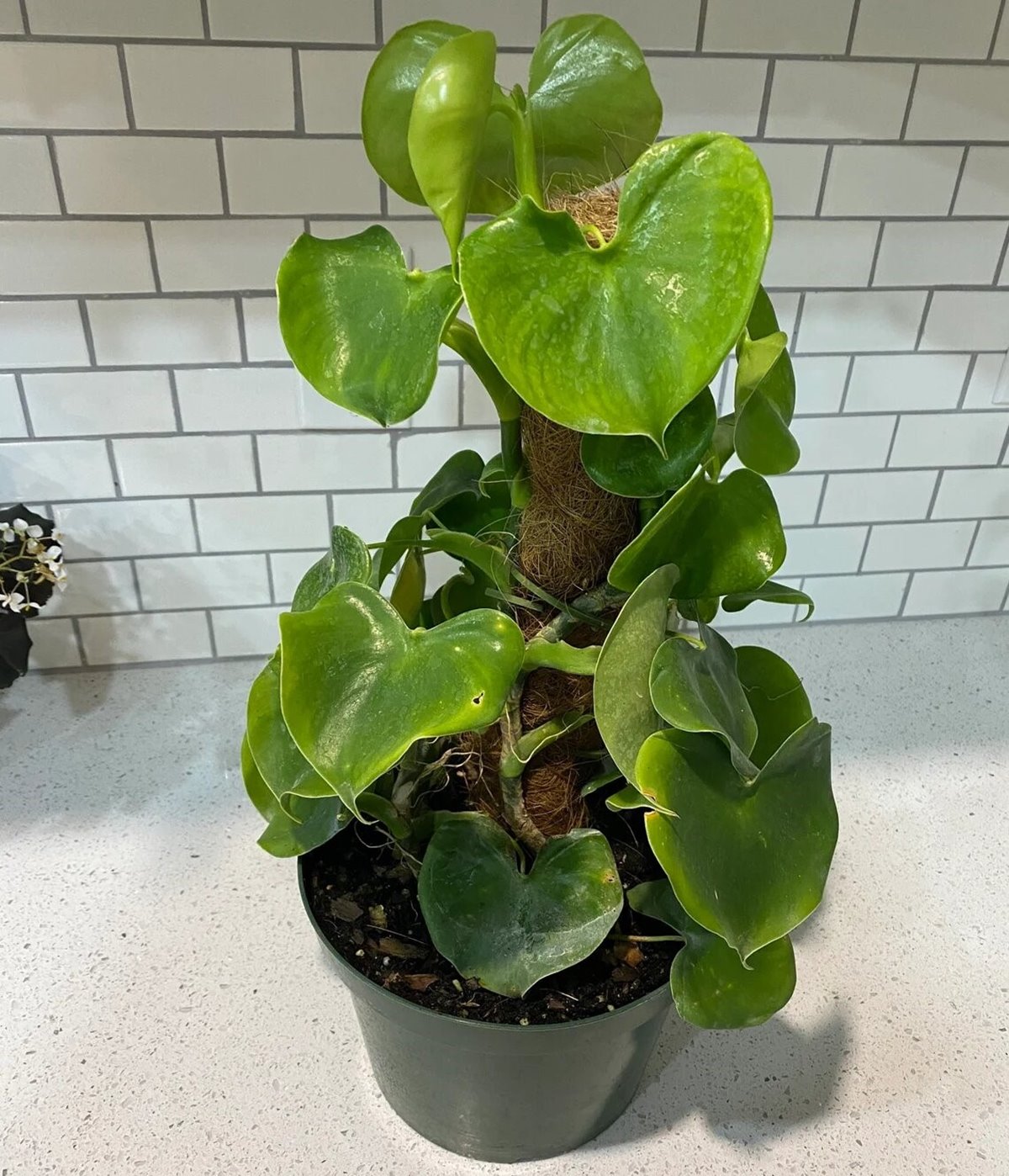
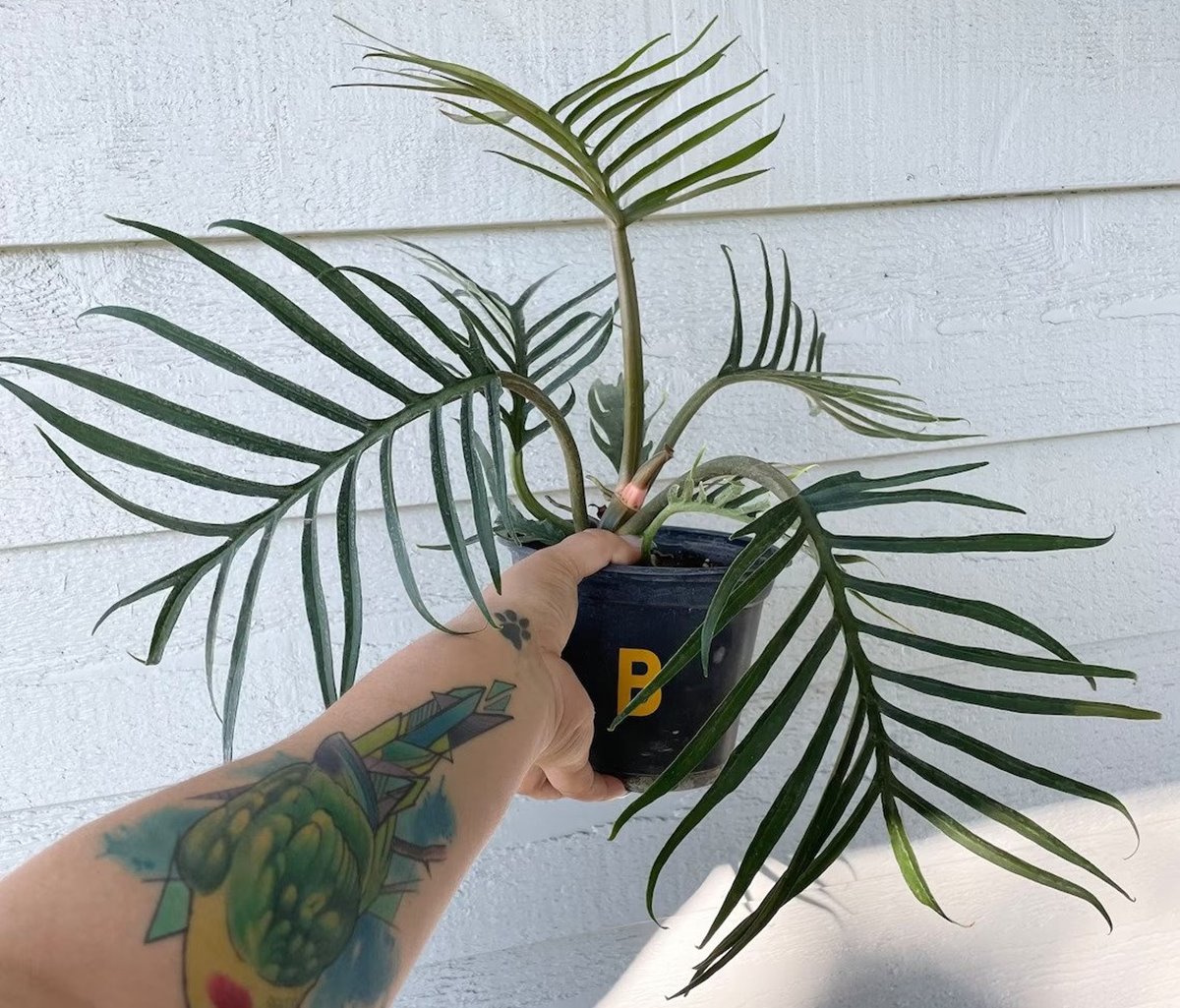


Leave a Reply